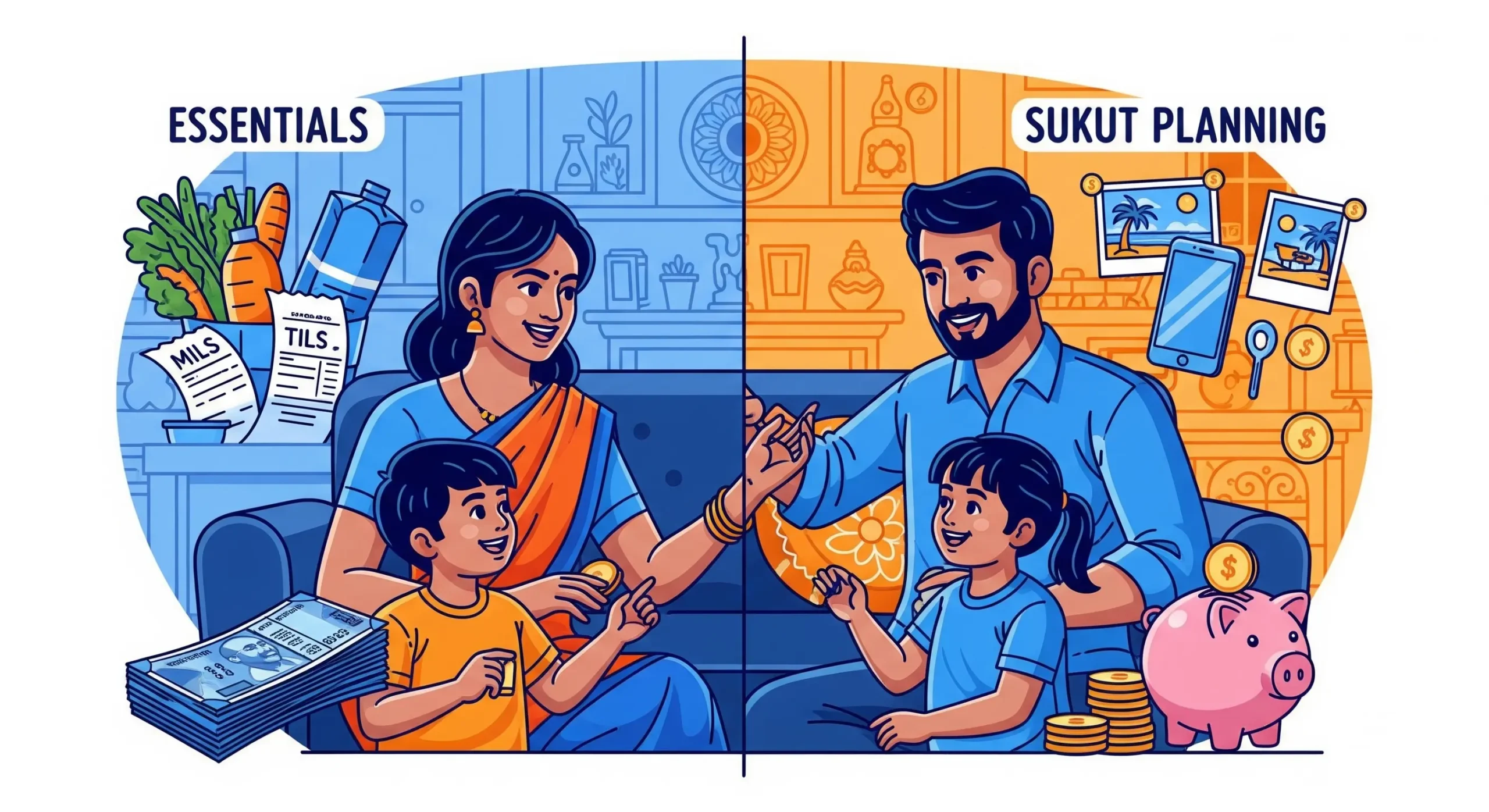Managing money wisely starts with knowing where to spend it. Understanding the difference between needs and wants is a fundamental step toward financial success. Needs are essential for survival, while wants enhance your lifestyle but aren’t necessary. This guide explains how to distinguish between the two and prioritize spending to achieve a balanced, stress-free financial life.
What Are Needs?
Needs are expenses you can’t live without. These include basics like food, housing, and healthcare. For example, paying rent or buying groceries ensures your basic survival. Without these, your daily life would be unsustainable.
Business Loan
Get personal loan up to 5 CR
Home Loan
Get home loan up to 50 lakhs
Needs also include essential services like electricity and transportation. For instance, paying for a bus pass to get to work is a need. These expenses form the foundation of your budget. Prioritizing them ensures your essential requirements are met before spending elsewhere.
What Are Wants?
Wants are non-essential expenses that improve your quality of life. These include items like dining out, new gadgets, or vacations. While they bring enjoyment, they’re not critical for survival. For example, a new smartphone might be tempting, but an older model that works is sufficient.
Wants often arise from personal desires or social influences. Advertisements or peer pressure might make you feel a bigger TV is necessary, but it’s still a want. Recognizing these expenses helps you control spending. This awareness prevents financial strain from unnecessary purchases.
Why Distinguishing Needs from Wants Matters
Knowing the difference between needs and wants is crucial for financial discipline. Overspending on wants can drain savings or lead to debt. For example, frequent dining out might feel rewarding but could reduce funds for essential expenses. Prioritizing needs ensures your budget stays balanced.
This distinction also helps you save for long-term goals. By spending less on wants, you can allocate more to savings or investments. For instance, cutting back on entertainment can free up money for a home down payment. A clear focus on needs builds a strong financial foundation.
How to Identify Needs vs. Wants

Aadhar Pe Loan
Get aadhar loan up to 1 lakhs
Personal Loan
Get personal loan up to 5 lakhs
Differentiating needs from wants requires careful thought. Start by asking if skipping an expense would harm your health or livelihood. If the answer is yes, it’s likely a need. For example, food is a need, but premium brands are a want.
Consider the long-term impact of the expense. Needs, like paying for education, have lasting importance. Wants, like designer clothes, offer short-term satisfaction. Evaluating expenses this way helps you categorize them accurately.
Another approach is to explore cheaper alternatives. If a lower-cost option meets the same purpose, the expensive version is a want. For instance, public transport is a need, but a personal car is often a want. This method ensures you spend wisely.
Practical Steps to Prioritize Spending
Prioritizing needs over wants is easier with a structured plan. These steps help you manage expenses effectively and maintain financial balance.
Step 1: List All Expenses
Begin by writing down every monthly expense. Include everything from rent to entertainment. Reviewing a month’s spending reveals what’s essential and what’s optional. This list forms the basis of your prioritization.
Step 2: Apply the 50-30-20 Rule
Use the 50-30-20 rule to structure your budget. Allocate 50% of your income to needs, 30% to wants, and 20% to savings or debt repayment. For a ₹40,000 monthly income, this means ₹20,000 for needs, ₹12,000 for wants, and ₹8,000 for savings. This framework ensures needs come first while allowing room for enjoyment.
Step 3: Cut Back on Wants
Review your wants and identify areas to reduce. For example, if you spend ₹2,000 monthly on dining out, consider cooking at home more often. Redirecting these funds to savings or debt repayment strengthens your finances. Small changes make a big difference over time.
Step 4: Plan for Irregular Needs
Some needs, like annual insurance premiums, occur infrequently. Set aside a small amount monthly to cover these costs. For instance, saving ₹1,000 monthly prepares you for a ₹12,000 yearly expense. This prevents unexpected costs from disrupting your budget.
Step 5: Use Budgeting Tools
Technology simplifies expense tracking. Apps like Moneycontrol or ET Money categorize spending automatically. They help you see how much goes to needs versus wants. These tools are user-friendly and keep you disciplined.
Challenges in Prioritizing Spending
Prioritizing spending can be tough in a world full of temptations. Advertisements and social media often blur the line between needs and wants. For example, a new smartphone might feel essential due to marketing, but it’s usually a want. Recognizing these influences helps you stay focused.
Rising costs also complicate prioritization. Essentials like food and utilities can take up a larger share of your budget over time. Adjusting your spending habits regularly ensures needs remain covered. Staying mindful prevents wants from overtaking your finances.
Balancing Needs and Wants
Completely eliminating wants can make budgeting feel restrictive. A balanced approach allows you to enjoy life while staying financially secure. Set aside a small portion of your income for wants, like a family outing. This keeps you motivated without compromising essentials.
Another way to balance is by finding affordable ways to enjoy wants. For example, instead of an expensive vacation, plan a budget-friendly day trip. Using discounts on platforms like Amazon or Flipkart also helps. Balance ensures your budget is sustainable and enjoyable.
Adapting to Different Income Levels
Spending priorities vary based on income and lifestyle. For a low income, like ₹20,000 monthly, focus heavily on needs like rent and food, using about ₹12,000. Wants, such as occasional dining, can take ₹4,000, with ₹4,000 for savings. This approach maximizes limited resources.
For a higher income, like ₹50,000 monthly, you have more flexibility. Allocate ₹25,000 for needs, ₹15,000 for wants like travel, and ₹10,000 for savings or investments. For variable incomes, like freelancers, base your budget on average earnings. Prioritize needs and maintain a savings buffer.
Staying Disciplined Over Time
Prioritizing spending requires ongoing effort. Share your financial goals with family to create accountability. For example, discuss saving for a child’s education to align priorities. This teamwork keeps everyone committed.
Regularly review your expenses to stay on track. If you overspend on wants, adjust the next month’s budget. Small rewards, like a modest treat after saving ₹10,000, maintain motivation. Consistent effort turns prioritization into a habit.
Conclusion
Understanding the difference between needs and wants is the key to prioritizing spending. By focusing on essentials, limiting non-essential expenses, and using tools to stay organized, you can achieve financial success. This approach ensures your money supports both daily needs and long-term goals. Start today to build a budget that works for you.
FAQs
1. What is the difference between needs and wants?
Needs are essential expenses like food, housing, and utilities required for survival. Wants are non-essential, like vacations or gadgets, that enhance your lifestyle.
2. How can I prioritize needs over wants?
List all expenses, apply the 50-30-20 rule, and use budgeting apps to track spending. Focus on essentials first to maintain financial balance.
3. Can I include wants in my budget?
Yes, allocate 30% of your income for wants like dining or hobbies. This ensures enjoyment without neglecting needs or savings.
4. How do I handle irregular needs like annual fees?
Save a small amount monthly, like ₹1,000, to cover yearly expenses like insurance. This prevents budget disruptions.
5. What tools help distinguish needs from wants?
Apps like Moneycontrol or ET Money categorize expenses automatically. They make it easy to prioritize needs and control wants.
